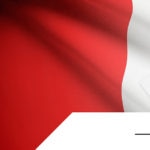X-ray of the presidential elections in Peru
Nineteen candidates will compete in the first round of the presidential elections in Peru on April 10, which reflects the multiparty nature of the Peruvian political system.

With less than three months to go for the elections in Peru, the latest voting intention figures published by the companies Ipsos, CPI and Datum show the Popular Force candidate Keiko Fujimori, holding on to first place with a share of more than 30%.
However, the pollsters are less unanimous when it comes to identifying the candidate who occupies second place, with a technical tie between Alliance for Progress contender César Acuña and Peruvians for Change leader Pedro Pablo Kuczynski, whose supporters represent around 13% of the voting preferences in both cases.
This fact is significant in the Peruvian elections because if no candidate obtains more than 50% of the validly cast votes, a second electoral round will be held on June 5 between the two contenders with the most votes.
As for former president Alan García, his candidature remains stable at nearly 8%. To date his alliance with Lourdes Flores, figurehead of the Popular Christian Party, has not had the impact that its followers hoped for.
New outlook: enter an outsider
All three pollsters have identified the emergence of what in Peru is commonly known as an outsider: in other words, a candidate who has moved center stage after being in the wings or not even being a player at all in the beginning. On this occasion it is Julio Guzmán, candidate of the All for Peru group who with 5% of the voting intention has seized the fifth place from former president Alejandro Toledo (3.2%). Guzmán has entered the electoral radar by stealing points from PPK, while left-winger Verónika Mendoza of Broad Front is currently attracting just over 2% of voters in the polls. The other 13 candidates have not yet managed to make a mark in the polls, and indeed that trend is unlikely to change.
Peruvian elections: economic proposals
In relation to the economic proposals of the five main candidates, all of them have distanced themselves from the anti-establishment discourse and coincided in the need to rekindle economic growth in an increasingly less favorable external situation due to the plunge in international commodity prices and the slowdown of the Chinese economy.
Each with their own slants, the candidates have stressed the importance of public investment to boost economic activity. For example, Keiko Fujimori has said she would use Fiscal Reserve Fund resources to promote growth through an ambitious agenda of infrastructure investment designed to foster the construction of highways and roads.
Meanwhile, Pedro Pablo Kuczynski has offered to reduce timeframes for the approval of public investment projects and cut taxes to encourage consumption and private investment. He has said that a government led by his party would slash poverty from 23% to 10% by the end of 2021.
The presidential candidate of Alliance for Progress (APP), César Acuña, plans to focus on modernizing the state, carrying out a series of reforms to promote public and private investment, and raising the minimum living wage and pensions.
Alan García's main promises are to achieve an annual growth rate of at least 6% for Peru and reduce poverty by no less than 10%. To create employment, he said it was necessary to declare a state of emergency in public investment and remove all obstacles preventing the injection of capital to facilitate 200,000 high-impact works.
Julio Guzmán, the newcomer in the electoral battle, has largely gone along with the general discourse and promised that major mining projects – currently at a standstill – like Tía María and Conga will be viable concerns if he is given the mandate.
Going off past political experience in Peru, electoral programs are not always realized, but for now at least it seems that the route taken by the candidates is fairly clear and there won't be any surprises for the economic agents when a new president is sworn in on July 28.